The 5 Most Sales-Effective and Cost-Effective Ad Types in 2019
by Ana Gotter • August 30, 2019
There will be a point in most business’s lifetimes when they realize that they’re ready to invest in PPC campaigns. For some, this is before they’ve even officially opened their doors, while for others it may be once they’re ready to scale.
At whatever point this decision arrives, however, all business owners and marketers will have to make the decision: which ad platforms will benefit them most, and which they’ll invest into.
There’s a lot that goes into this decision, naturally. Businesses need to decide where they’ll be able to come across large numbers of their target audience, along with which platforms can help them reach users at each stage of the sales funnel. They also typically look at the cost involved in each platform, because each one comes in at different price points.
This is a careful balancing act that can be a little tricky, but with the right information, the decision is much easier. Let’s take a look at 5 of the most sales-effective and cost-effective ad types in 2019 and the best uses of each one.
1. Facebook Ads
Facebook Ads (which includes its sister company Instagram Ads) is one of the more results-effective and cost-effective ad types across the board. They allow you to create demand for your products and introduce your brand to customers, showing them things they may never have even thought to look for.

Facebook gives you a chance to push new users into your sales funnel, and then gives you the tools to follow up with retargeting to get them to the purchase stage.
Cost
Cost can vary as the marketplace shifts (all of the PPC platforms on this list are using an auction system), but the average cost-per-action (CPA) for your standard ad campaign is going to be around $0.40 to $1.50 depending on the campaign.
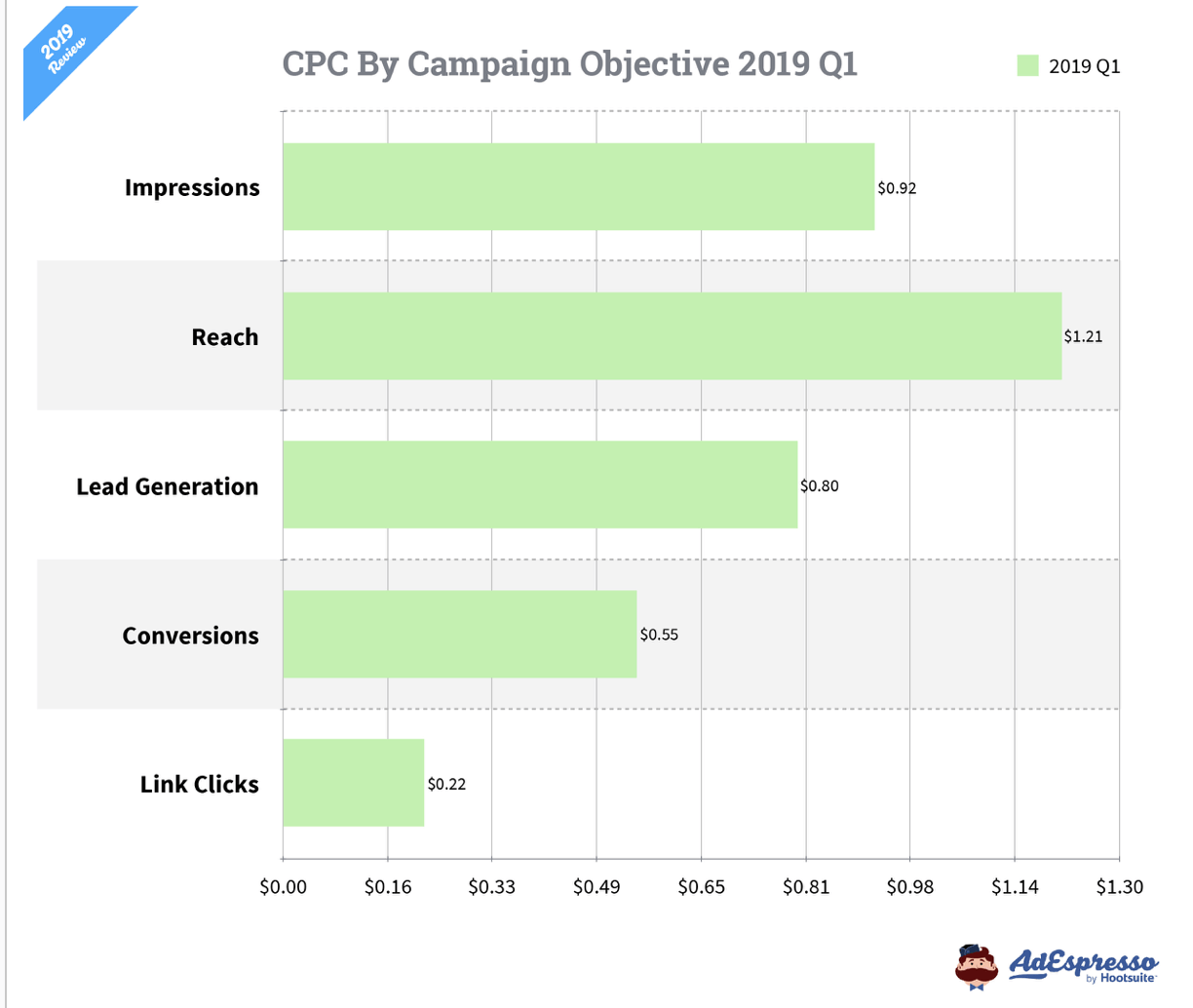
Image source: AdEspresso
Your CPA will depend on what specific action you’re optimizing for, what audience you’re targeting, which placements you’re prioritizing, and what your competitors are doing, too. Current research has shown costs cost dramatically decreased in 2019 compared to previous years, so hopefully this trend continues.
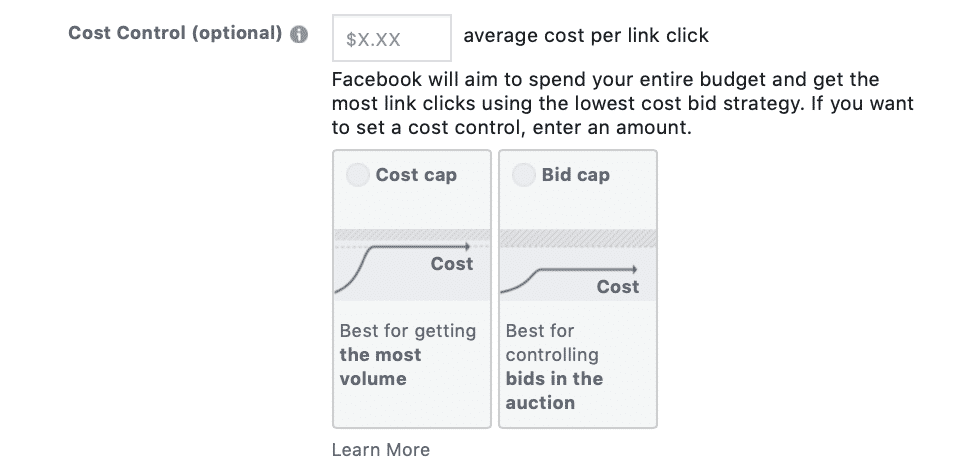
You can use cost-controlling measures on Facebook to ensure that you’re never bidding a single penny more than what you can afford to. This is available through the bid cap options in the budgeting section, but it isn’t enabled by default, so remember that you need to look for it.
Pros and Cons
The pros of Facebook Ads:
- Demand generation capabilities. You don’t need to wait until people come looking for you and then have to fight competitors for a placement.
- Retargeting options. You can currently retarget based on site and app activity, custom audience lists made from emails, on platform activity, and more.
- General targeting options. The behavior and interest-based targeting are great.
- Bid caps. Never spend more than you want to.
The cons of Facebook Ads:
- The approval system is finicky. Speaking from experience, sometimes ads that meet all criteria seemingly get rejected for no reason. You can appeal this but it takes time.
- There are sometimes surges in pricing. Right now, we’ve seen a dramatic decrease, but that doesn’t mean it can’t go back up.
2. Google Search Ads
Google’s search ads are right up there with Facebook in terms of popularity, but they work completely differently. Here, users will search for something they need or are researching, and your ad can show up at the top of their results.
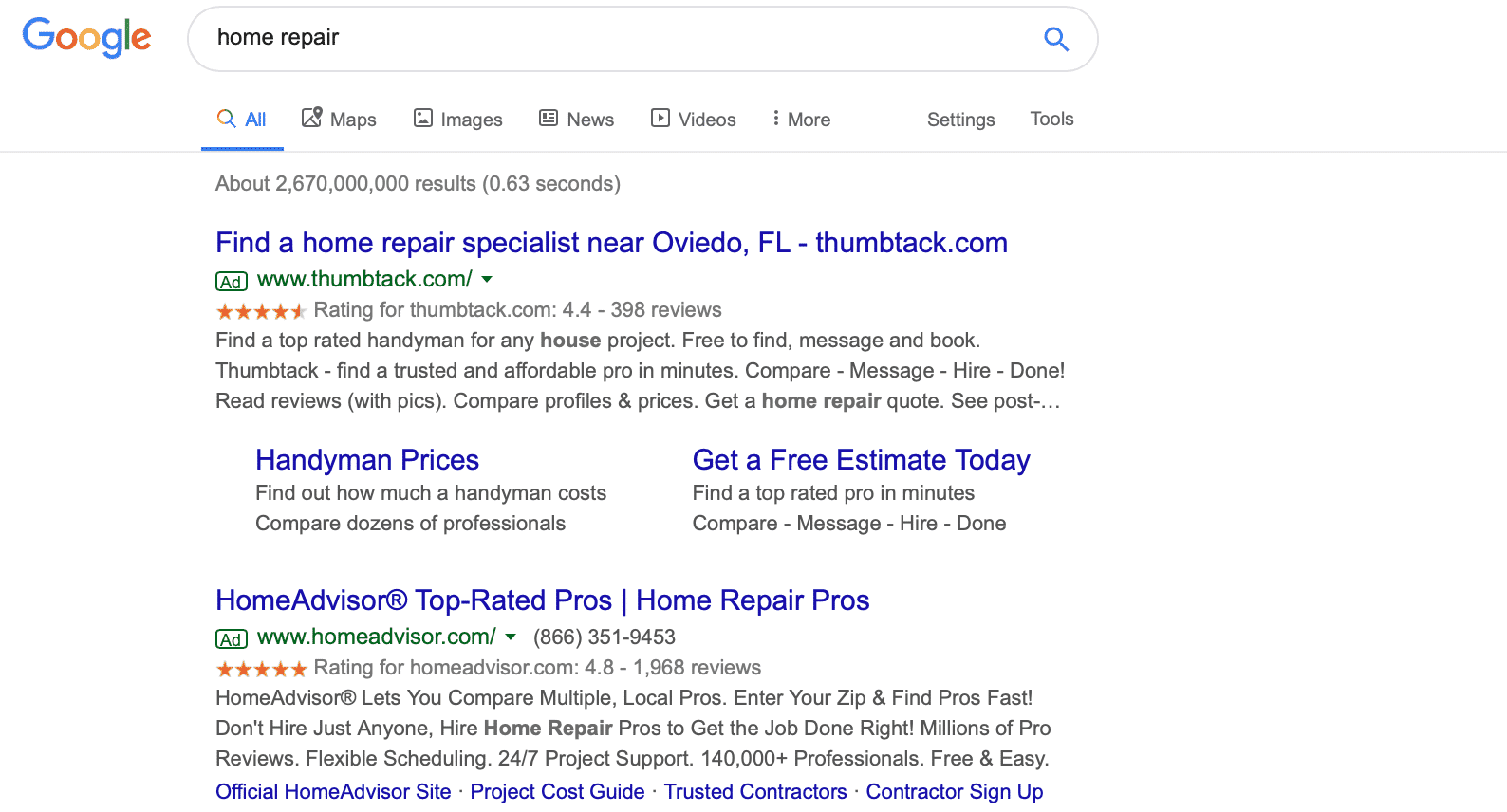
This gives you major visibility with users who are currently looking for solutions like yours, capturing them while they’re deeper into the funnel and therefore more likely to buy. They’re buying from someone, after all—it might as well be you.
Cost
Google Ads costs all depend on the keywords that you’re targeting. Some keywords are significantly more expensive than others, so it’s going to be up to you to decide whether or not the keywords are cost-efficient for the return on investment you can see if the client converts.
The cost for a keyword like “order herbs online” is going to put you somewhere from $.30 to $2.00.

Keywords related to searches involving finding any kind of lawyer, however, can cost you over $200 per click.

This does make sense, especially since it’s driven by the marketplace. There’s a good chance that a $125 CPC for a click to a lawyer’s successful landing page may actually have a higher ROAS or ROI than a $2.oo click on ordering a few herbs online in the grand scheme of things.
So, it’s up to you to determine how much you can afford to spend. In many cases, businesses do see high ROIs on strategic, tightly-targeted campaigns after a few rounds of testing.
Pros and Cons
These are the pros of Google’s search ads:
- Reach users during the critical stages where they’re researching what to purchase. Even if they aren’t going to purchase right now, you want to be on their radar.
- Search ads can help you close the gap between you and some of your toughest competitors if they’re consistently outranking your organically, giving you more visibility.
- You can create tight-knit keyword groups, using negative keywords to ensure that you’re not showing up in irrelevant searches and keeping your campaigns relevant. The more relevant your copy is to the targeted keywords, the better placements you may see, too.
- You can set maximum CPC limits, just like you do with Facebook, to ensure you’re not going outside of the range of profitability.
Cons:
- Costs can vary a great deal. Even when you’re researching through Google’s keyword planner, there can be a big gap in CPCs on a single keyword. This can be unpredictable.
- Search intent can be difficult to interpret. This may force you to bid on longer-tail keywords for more success, even if they’re not as high volume, or risk showing up in irrelevant placements.
The bottom line here is that Google can cost more than other platforms, but the potential benefit of reaching users during those key research stages can easily be worth it. Test early and often, and stay on top of those campaigns.
3. Google Display Ads
Google’s display ads are another part of the Google Ad system, and these work more like Facebook’s. Advertisers can have their ads displayed to people who fit within their targeting criteria on sites within the network all over the internet. You can control what sites your ads appear on, whether you want to just choose the general category or even list specific publishers.

Display Ads give you the option to create demand instead of waiting to capture it, similar to Facebook Ads.
Cost
Google’s display ads cost less per click on average than Google’s search ads. According to WordStream, the average CPC on a search ad is around $2.32, but it’s only $0.58 on the display network. There’s more stability here in costs than search ads, too, because you don’t have certain keywords driving up costs by tens or hundreds of dollars.
Pros and Cons
There are pros and cons to Google’s display ads.
The pros include:
- Getting to reach users even if they aren’t looking for you.
- Some of the retargeting abilities. They aren’t as good as Facebook, but you can take the ads off-platform, reaching users wherever they go online instead of hoping they’re on one social networking site.
- The reach is enormous. Google’s display network can reach more than 90% of all internet users.
The cons:
- You’re not getting to capture active demand, so it’s often a good choice to run display ads simultaneously as search ads if that’s what you’re looking for.
- Some display ads are blocked with ad blockers, and because they’re often on the sidelines of content, people may not be quite as likely to interact. When they do, however, conversion rates are in line with what you’d see on other platforms.
4. LinkedIn Ads
LinkedIn Ads are a must-use for many B2B businesses trying to connect with their audience. They have a variety of different ad types—which you can read about here—that make it easy to get in touch with your audience. They work like Facebook’s ad system, allowing you to target users who fit your criteria and show your ads to them.
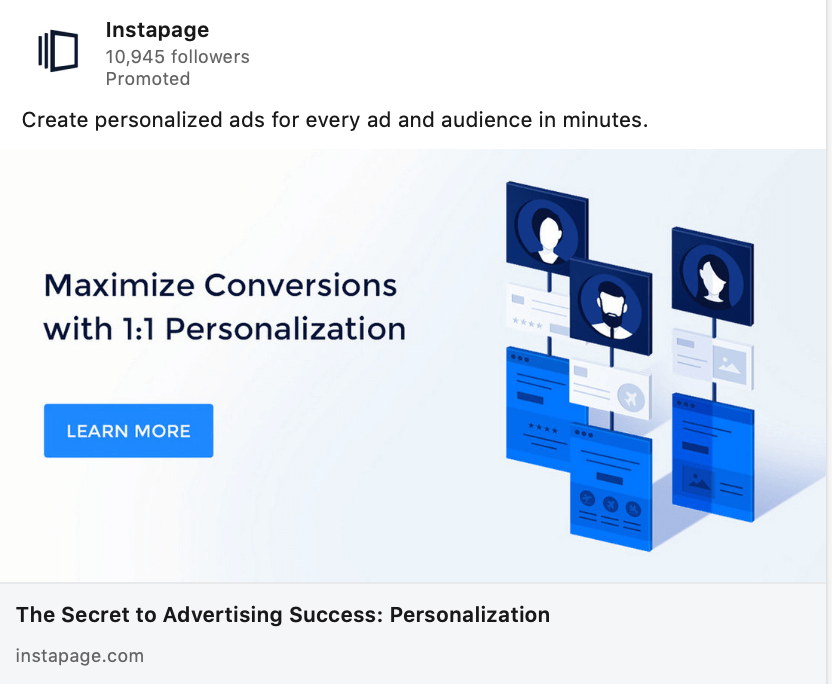
Cost
Once again, CPCs vary heavily based on targeting criteria and what’s currently happening with your competition.
LinkedIn Ads has a solid click-through rate at around 0.025%, which can be increased with hyper-targeted ad campaigns that really speak to your audience. Retargeting campaigns also typically see higher click-through and conversion rates.
LinkedIn Ad costs seem to start at around $2 per click for in-feed placements (though I’ve seen them as high as $4.50), or $0.80 per sent sponsored in mail, making the latter option more cost effective option, especially since it demands user attention because it gives them a notification and inbox message.
Pros and Cons
Here are the pros of LinkedIn Ads:
- They’re stellar when you’re trying to reach a B2B audience, who may not otherwise engage with B2B content on other social platforms.
- Their sponsored inbox ad format is a great choice, almost requiring attention as if you were sending them an email. They have to take notice of it.
- It’s a growing platform with strong B2B targeting features, including incredibly specific targeting based on job titles, the corporation your clients work for, and more.
The cons of LinkedIn Ads:
- There isn’t as much data here, and costs can go up quickly. They still made the list because they’re cost effective in some cases, but especially when you consider the results potential.
- You need to test them more heavily. Some LinkedIn Ads seem to be a little more finicky than other platforms I’ve worked with, though this isn’t always a reliable rule.
5. Bing Ads
Bing Ads work just like Google search ads. They have almost all of the same features and capabilities, which we look at here. They do have a slightly smaller audience, but it’s a particularly engaged audience (who spends more time on average on Bing than other users do with their search engines).
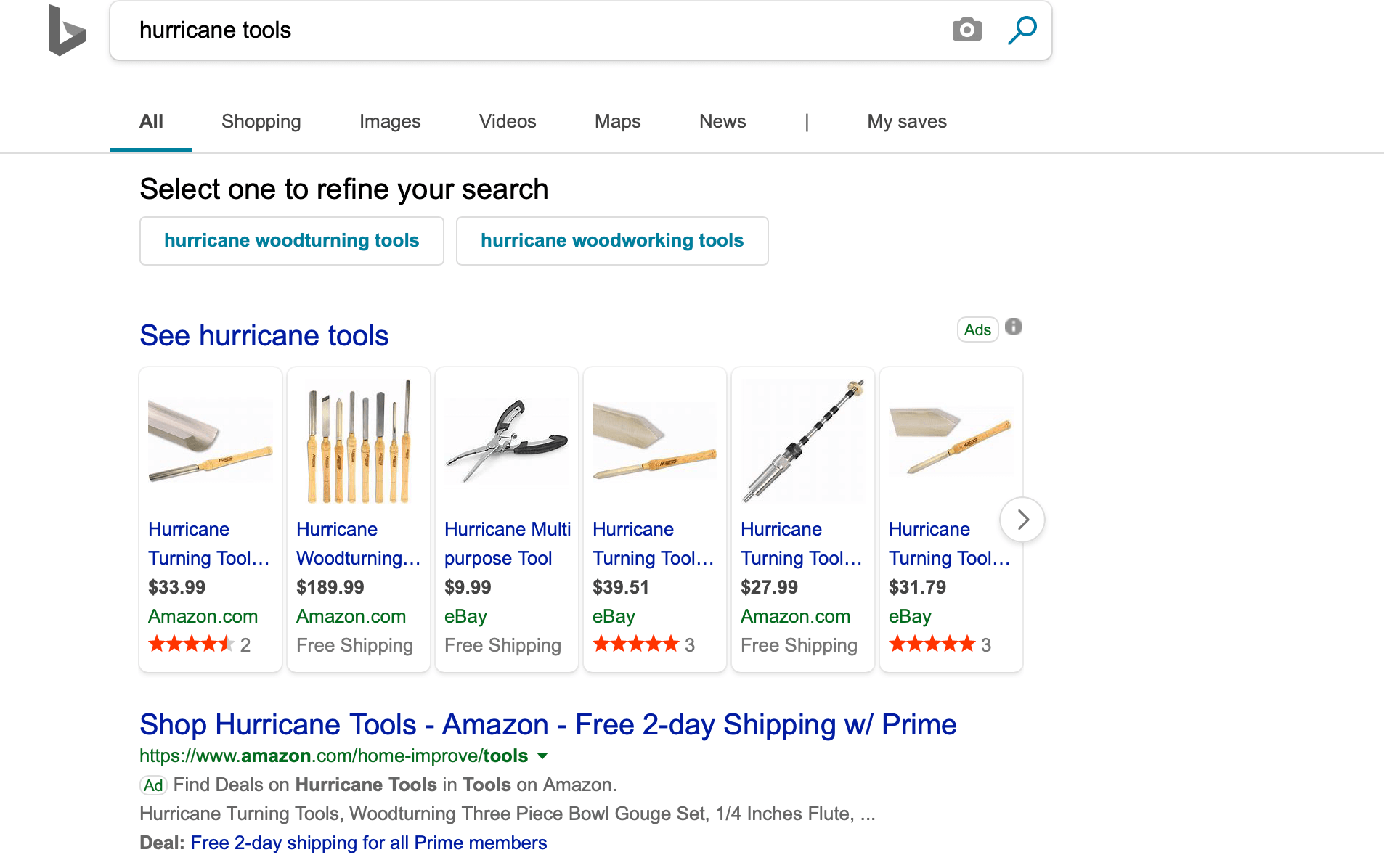
And, with nearly 1/3 of all online searches still happening through Bing, there’s significant potential here. Especially since you can get similar results with a still-enormous audience at a fraction of the cost.
Cost
This is the big appeal for Bing Ads. Because Google is the largest search engine, the majority of businesses and advertisers are focused in there. They neglect Bing, meaning that there’s less competition. Costs go down as a result.
Some research has shown that Bing Ads may cost an average of around 33.5% less per click than Google clicks, which is an enormous savings no matter how where your keyword cost is coming in at.
While the actual cost of Bing Ads will depend exclusively on how competitive and high-value your keywords are (lawyer-oriented keywords are still insanely high, for example), you can bet that they’ll be somewhere between 25-45% cheaper on Bing than Google, and they’ll have the same results (if not better) in most cases.
Pros and Cons
The pros of Bing Ads are the same as Google:
- Similar results but lower costs than Google Ads. You’re still getting conversions but boosting your ROAS.
- Same great ability to capture users who are searching for products, services, and brands like yours.
Cons:
- You are working with a smaller audience, and Bing’s algorithms aren’t quite as on point as Google’s. That being said, you still get to bid on keywords and can set up negative keywords to keep things relevant, and the audience is still more than large enough to drive results. To be safe, you can run campaigns on both platforms.
- Bing’s audience, on average, skews older. This means they may have more spending ability, but it also means that you may miss bigger portions of younger generations. If that’s your target audience, consider this.
Final Thoughts
PPC ad platforms are a great way to drive sales and establish brand awareness, but the benefits can’t outweigh the costs. So many businesses who are getting started end up losing money because they’re bidding too high for profitable to even be possible, or looking for their audiences in the wrong places.
Knowing the strengths and weaknesses of each platforms and what their potential costs may be allows you to make a smart, strategic choice for your business. This increases the likelihood of success and profitability, giving you the highest ROAS and ROI possible.
Need some help choosing a platform or managing your campaigns? We can help with that. Get in touch with us here to learn more.
What do you think? Which PPC platform has worked best for your business? Which cost effective ad type has increased your ROI? Share your thoughts and questions in the comments below!




